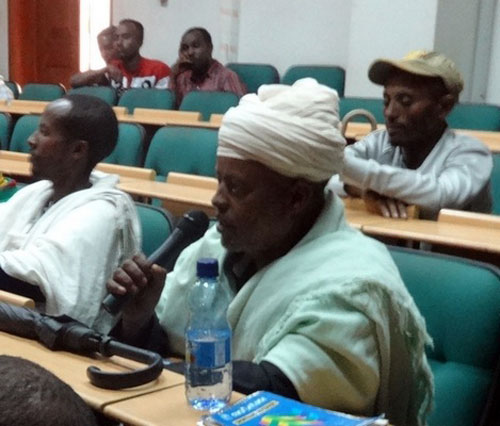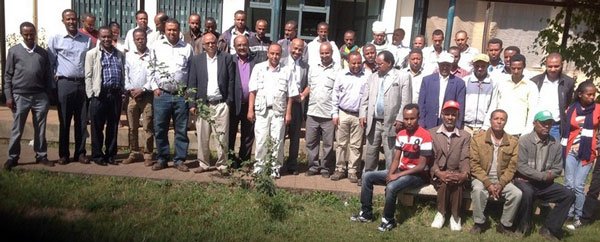Millions of smallholders in Africa benefit from climate resilient drought-tolerant maize

NAIROBI, Kenya (CIMMYT) – At least 40 million smallholder farmers throughout sub-Saharan Africa are profiting from more than 200 new drought-tolerant varieties of maize produced as part of the Drought Tolerant Maize for Africa (DTMA) Project, according to scientists at the Center for International Maize and Wheat Improvement (CIMMYT).
The project, underway between 2007 and 2015, led to the development of varieties with traits preferred by farmers that have successfully made smallholders in 13 countries more resilient to the erratic effects of climate change on growing conditions.
“Smallholder farmers in this region plant maize varieties that are obsolete and end up getting poor harvests, but that’s changing now thanks to the gallant efforts of the DTMA team that has released and commercialized a large number of modern varieties,” said Tsedeke Abate, the CIMMYT scientist who led the project. “Thanks to the new drought-tolerant varieties, many families have managed to overcome harsh growing conditions and boost yields substantially.”
In 2014 alone, more than 5 million smallholder farmer households planted the new varieties on 2.1 million hectares (5.2 million acres), an area roughly the size of El Salvador. Overall, 54,000 metric tons of high quality seed were produced in 2014 through the DTMA project, which received funding from the Bill & Melinda Gates Foundation, Britain’s Department for International Development, the Howard G. Buffet Foundation and the U.S. Agency for International Development (USAID).
COMPLEX CHALLENGES
“The adoption of the improved drought tolerant seed varied from one country to another and each county had unique challenges that made it difficult for some farmers to take up the new varieties. Some farmers were not aware of the availability of the seed in their markets, for some the seed was not available or the price was high,” Abate said. “We worked with national seed companies in these countries to increase production of certified seed so that many more farmers can buy the seed at an affordable price as well as demonstrating the benefits of the new varieties.”
Anthony Mwega, a farmer and leader in Olkalili village, in Hai district a semi-arid area in northern Tanzania about 600 kilometers (370 miles) from the capital Dar es Salaam, beat the price constraint by mobilizing 66 farmers from his village and neighboring villages Makiwaru and Ngaikati to pool resources and buy 5 metric tons of HB513 – a drought-tolerant and nitrogen-use efficient variety – at a very affordable price from Meru Agro Tours and Consultant Seed Company.
“The overall purchasing price we bought the seed for was about 50 percent less than the market price because we bought it in bulk,” said Mwega. “I saw how good the maize performed in demonstrations organized by Meru Agro during the 2014 planting season with extremely low rains, and knew this is a variety that my people would definitely benefit from.”
Scientists project that millions more farmers will gain access to and plant the new varieties due to collaborations with more than 100 national seed companies, which continue to make a significant contribution to the improvement of seed systems in Angola, Benin, Ethiopia, Ghana, Kenya, Malawi, Mali, Mozambique, Nigeria, Tanzania, Uganda, Zambia, Zimbabwe.
“Collaboration with CIMMYT through the DTMA project has been extremely instrumental in facilitating me to release my own varieties,” said Zubeda Mduruma of Aminata Seed Company in Tanga, Tanzania who has collaborated with CIMMYT both in maize breeding and production work since 1976.
“I was able to get some of the best germplasm, evaluate them through on-farm and on-station trials, and successfully released three of the best drought tolerant varieties in the market, including one quality protein DT variety that is very popular among women because of its nutritional value. With the quality of maize we get from CIMMYT, it’s very possible to release new improved varieties every year with much better yield compared to popular commercial varieties in our shops.”
The story of this success is told through a series of pictures and profiles of DTMA target countries. Each country profile illustrates the context of national maize production and the changes underway thanks to released drought-tolerant varieties.
The DTMA project will continue, first as the Drought Tolerant Maize for Africa Seed Scaling (DTMASS) initiative. Under the project, which is funded by USAID, CIMMYT scientists aim to facilitate the production of close to 12,000 metric tons of certified seed for use by about 2.5 million people, in Ethiopia, Kenya, Malawi, Mozambique, Tanzania, Uganda and Zambia.
In partnership with the International Institute of Tropical Agriculture who partnered with CIMMYT in DTMA work, the new Stress Tolerant Maize for Africa project will also carry forward the success and invaluable lessons from DTMA and CIMMYT’s Improved Maize for Africa Soils project, to develop new stress tolerant varieties to help farmers mitigate multiple stresses that occur concurrently in farmers’ fields.
Read more:
The legacy of drought tolerant maize for Africa
Going further down the path to bolster Africa’s maize sector
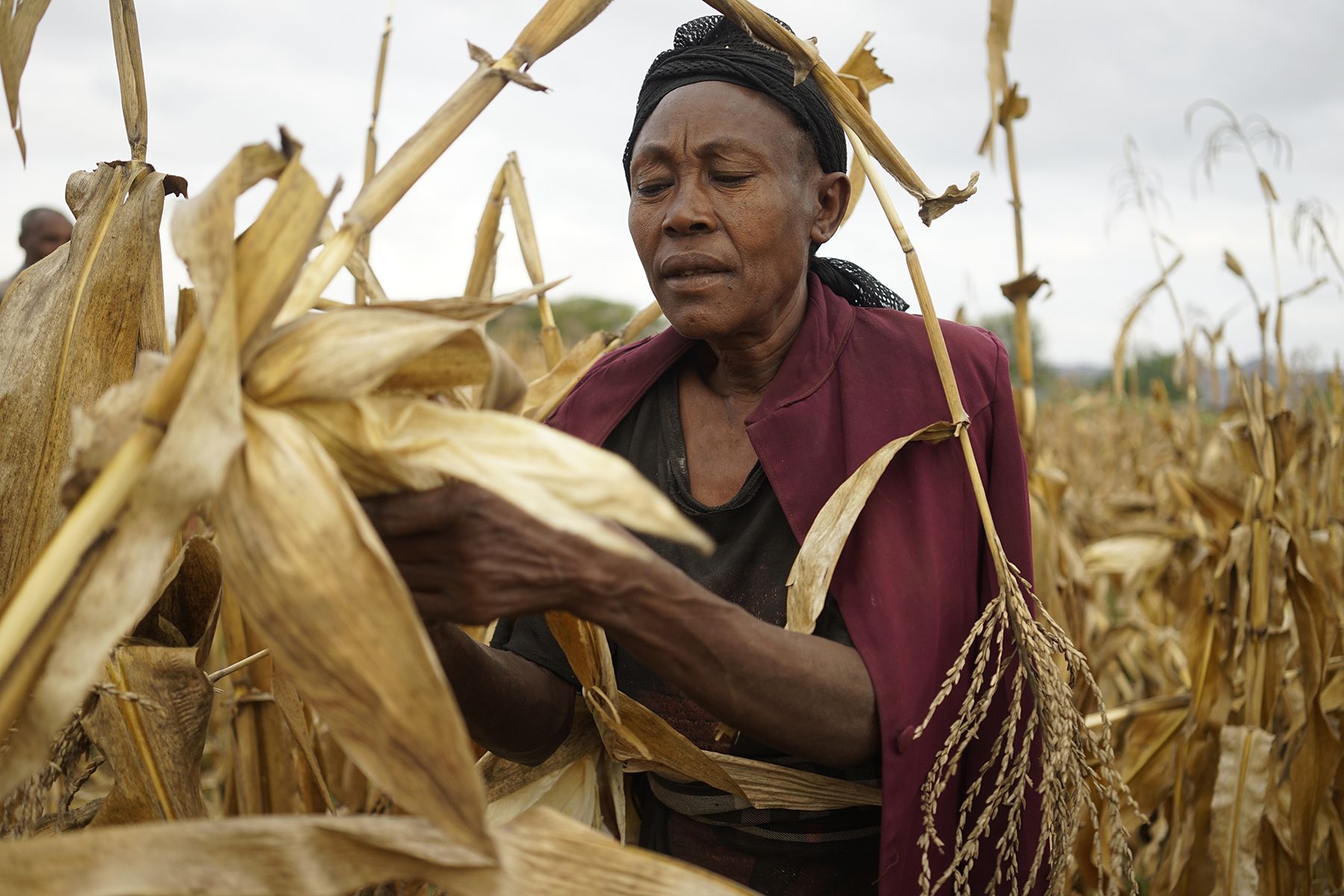
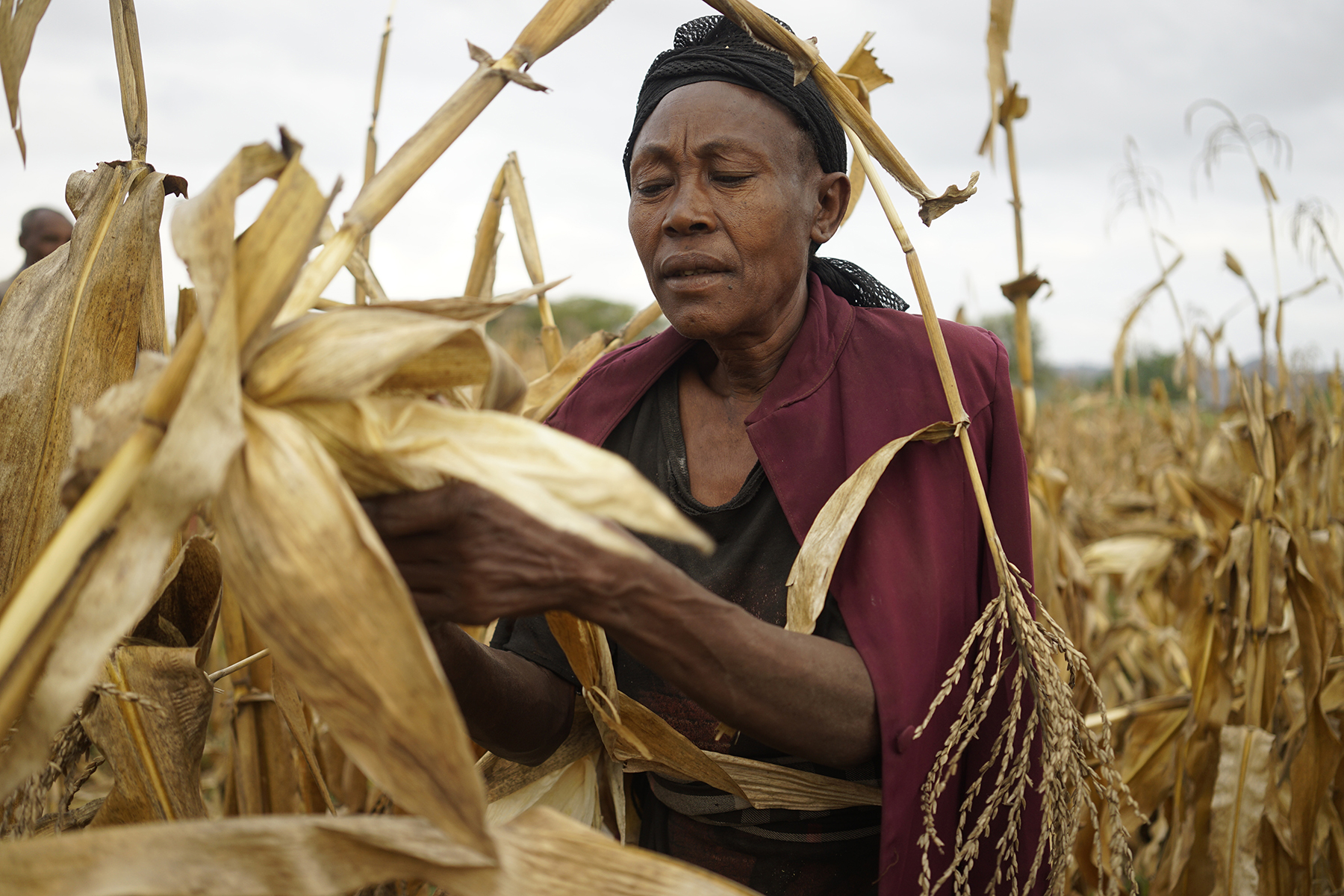
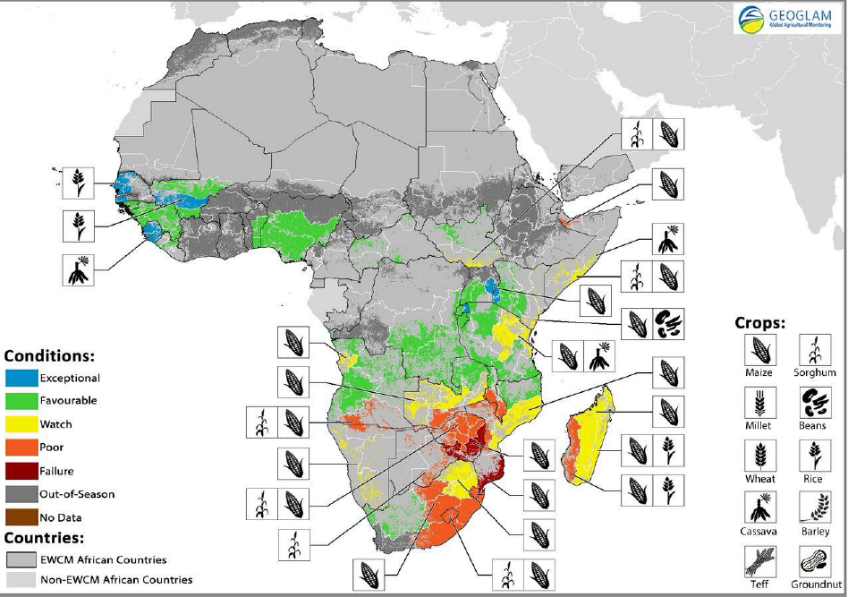
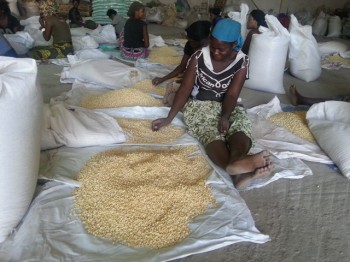
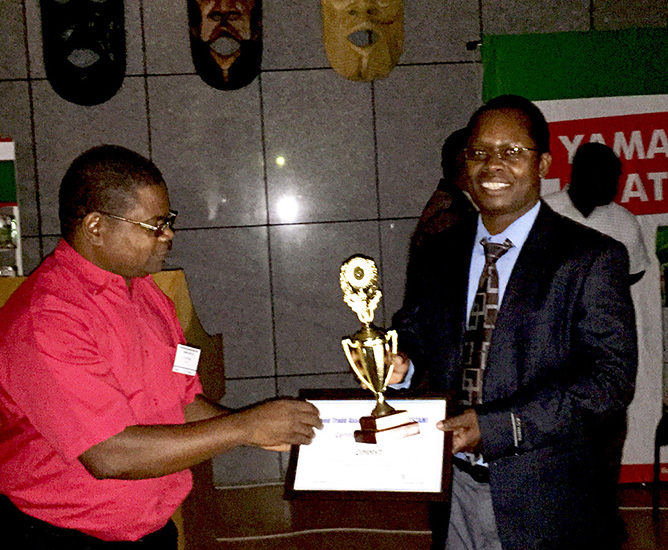
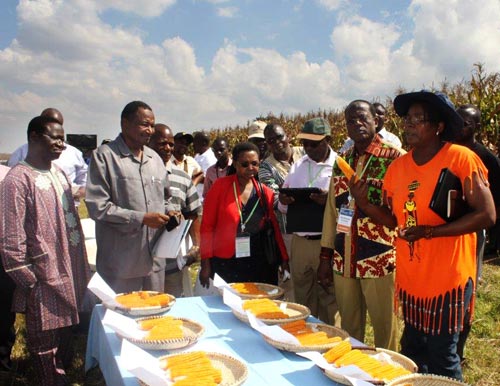
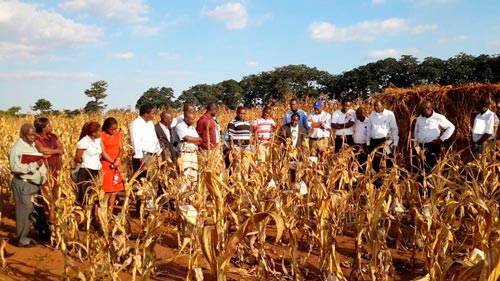
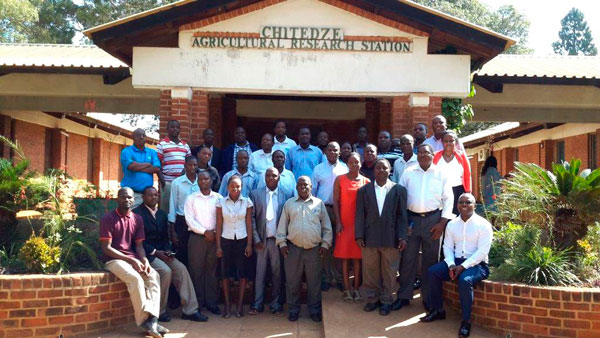
 Christian Thierfelder is a CIMMYT cropping systems agronomist based in Harare, Zimbabwe. He has worked since 2004 in CA projects in Malawi, Mozambique, Zambia and Zimbabwe and has conducted applied and strategic research on-farm and on-station to adapt CA to the needs of smallholder farmers in southern Africa. Through effective partnerships he has reached out to more than 10,000 farmers in southern Africa. He guided the research programs of 25 B.Sc., M.Sc. and Ph.D. students, and has authored and co-authored more than 30 research articles in high-impact peer-reviewed journals and books.
Christian Thierfelder is a CIMMYT cropping systems agronomist based in Harare, Zimbabwe. He has worked since 2004 in CA projects in Malawi, Mozambique, Zambia and Zimbabwe and has conducted applied and strategic research on-farm and on-station to adapt CA to the needs of smallholder farmers in southern Africa. Through effective partnerships he has reached out to more than 10,000 farmers in southern Africa. He guided the research programs of 25 B.Sc., M.Sc. and Ph.D. students, and has authored and co-authored more than 30 research articles in high-impact peer-reviewed journals and books.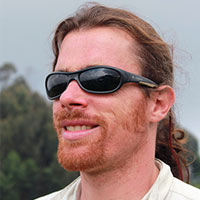
 Isaiah Nyagumbo is a CIMMYT cropping systems agronomist based in Harare, Zimbabwe. He has worked in water harvesting and soil conservation research initiatives and was a pioneer of CA work on smallholder farming systems in Zimbabwe since the 1990s. Isaiah currently leads the agronomy component of the CIMMYT managed and ACIAR funded regional program ‘Sustainable Intensification of Maize-Legume Systems in Eastern and Southern Africa (SIMLESA)’ operating in 5 countries of Eastern and Southern Africa. Isaiah has also authored and contributed to regional research publications focusing mainly on CA, agricultural water management, water harvesting and technology dissemination.
Isaiah Nyagumbo is a CIMMYT cropping systems agronomist based in Harare, Zimbabwe. He has worked in water harvesting and soil conservation research initiatives and was a pioneer of CA work on smallholder farming systems in Zimbabwe since the 1990s. Isaiah currently leads the agronomy component of the CIMMYT managed and ACIAR funded regional program ‘Sustainable Intensification of Maize-Legume Systems in Eastern and Southern Africa (SIMLESA)’ operating in 5 countries of Eastern and Southern Africa. Isaiah has also authored and contributed to regional research publications focusing mainly on CA, agricultural water management, water harvesting and technology dissemination.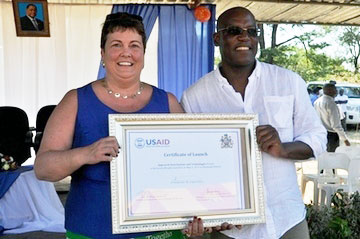
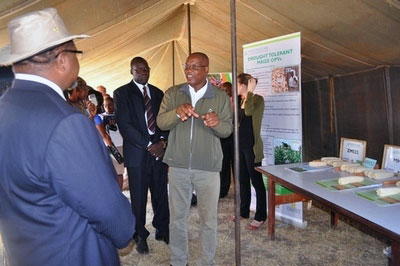
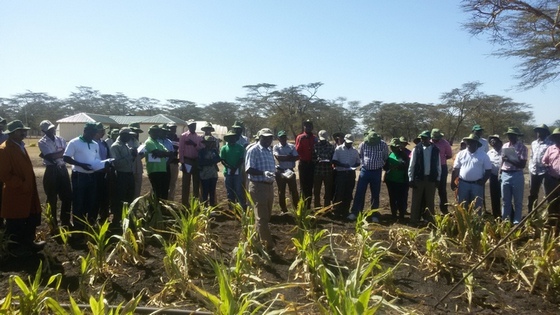
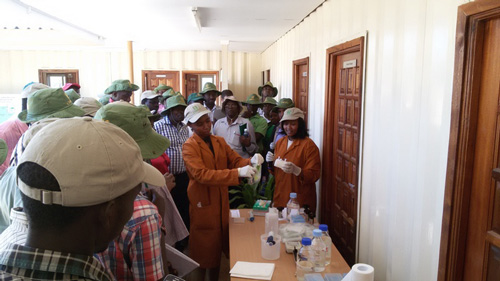
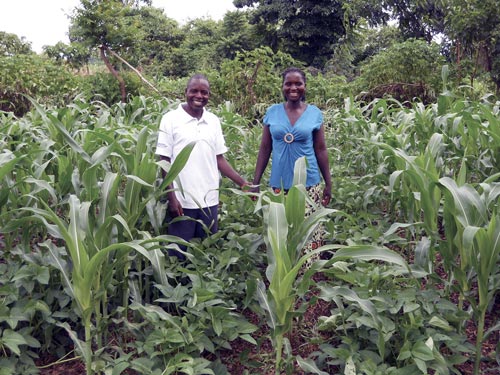
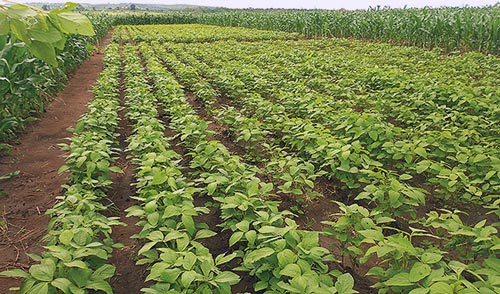
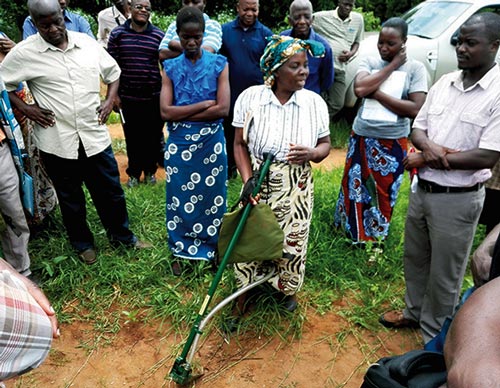

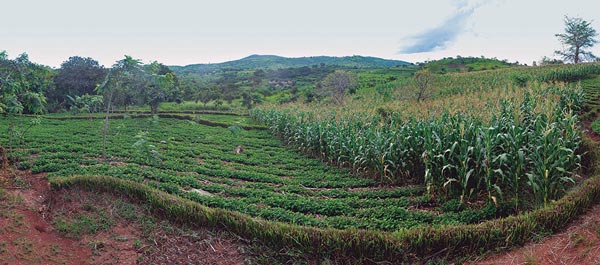
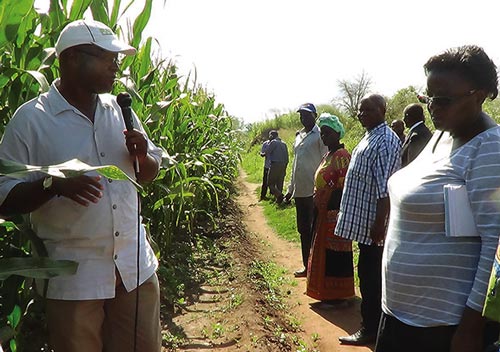
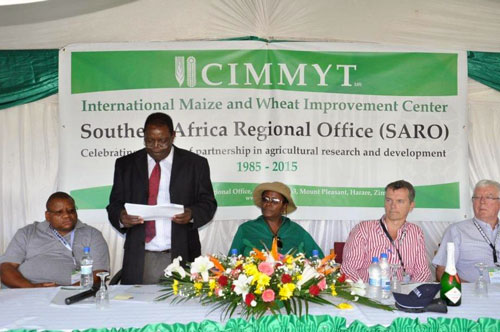
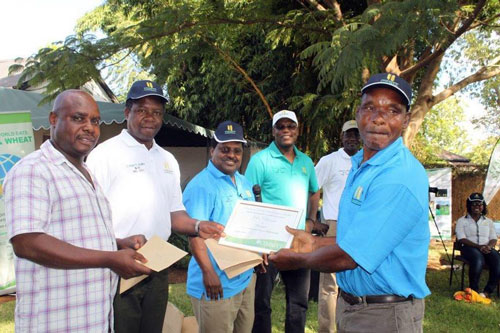
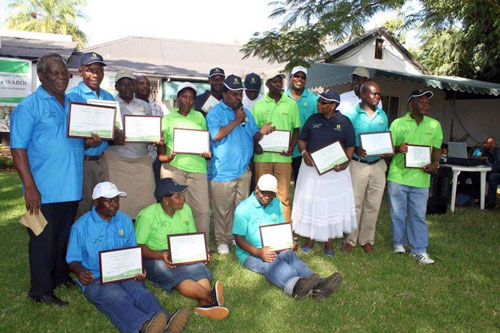
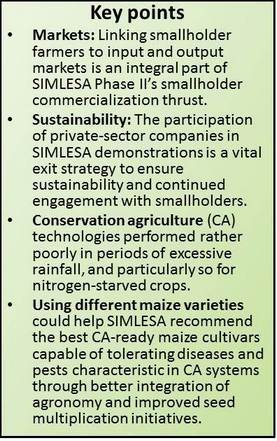 In Malawi, the field visits began at Kasungu District, with 16 farmers and technical staff from Mozambique who were on an exchange visit also participating. The group visited outscaling initiatives by the National Association of Smallholder Farmers of Malawi (NASFAM), in which maize–groundnut rotations and maize–pigeonpea systems are being implemented through lead farmers. More than 120 households per field learning site are participating in the demonstrations on each of the five NASFAM sites visited.
In Malawi, the field visits began at Kasungu District, with 16 farmers and technical staff from Mozambique who were on an exchange visit also participating. The group visited outscaling initiatives by the National Association of Smallholder Farmers of Malawi (NASFAM), in which maize–groundnut rotations and maize–pigeonpea systems are being implemented through lead farmers. More than 120 households per field learning site are participating in the demonstrations on each of the five NASFAM sites visited.
